Howitzer D-1 model 1943 year
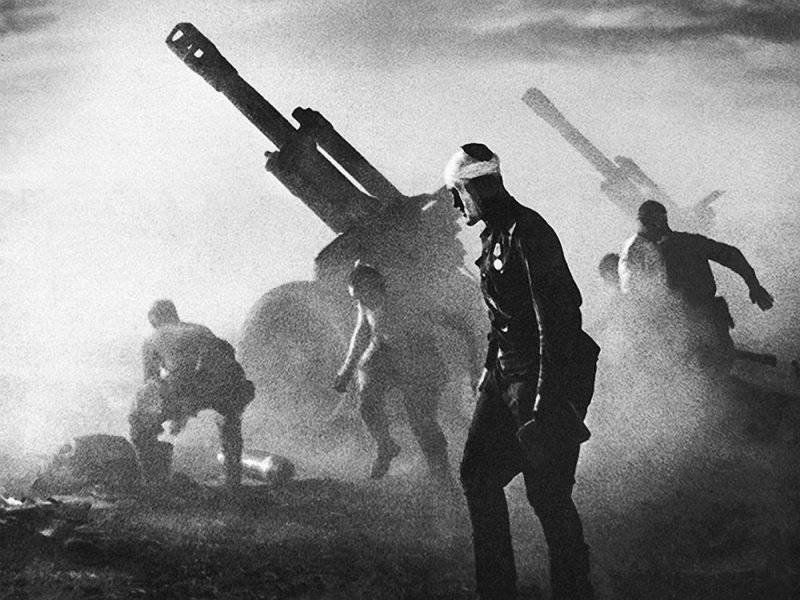
A very famous photograph, thanks to the figure of a wounded officer in the foreground.
In Soviet photo albums, the photos are called “Stand to death”, which seems illogical, as it is suitable for fierce defense (such as, for example, in September-October 1942 in Stalingrad), and in Belarus Soviet troops did not stand, but attacked, for 2 of the month, wehrmacht’s “Center” army group was swept away and having lost 5 times less people than the Germans.
The main purpose of the 152 mm howitzer was to arm the Red Army in order to be able to overcome various obstacles by infantry units. The D1 howitzer was required in the corps artillery units and the RVGK (part of the reserve). When Soviet troops entered the 1943-44 year, howitzer guns 152 mm, one artillery regiment consisted of five artillery batteries. In total, the artillery regiment consisted of 20 guns. The D-1 howitzer joined the A-19, ML-20, etc. weapons in service. In parts of the RVGK, the states of artillery units were slightly different:
- a howitzer regiment comprised 48 howitzer guns;
- A heavy howitzer brigade consisted of 32 howitzers;
- accordingly, brigades and regiments could make up an artillery division if necessary.
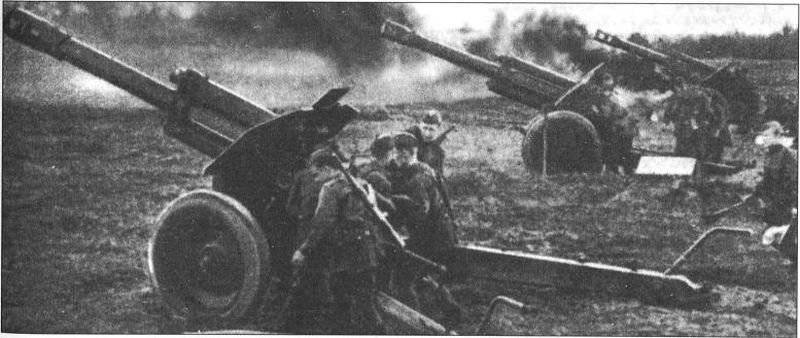
History create
According to the armament concept existing in the USSR in 30, the 152 mm howitzer adopted for use in 1938 was intended to crack the enemy's fortified defense. However, for several reasons, this howitzer was practically not produced either in the pre-war years or at the beginning of the Second World War. It is known that the beginning of work on the creation of an X-NUMX mm howitzer D-152 can be considered as the calculations of the design bureau under the direction of F. Petrov at the end of 1. At that time, preliminary calculations were carried out for the installation of a 1942 mm gun barrel on the carriage section of the M-152 howitzer of the 30 mm caliber. All work was carried out on the enthusiasm of designers, orders for the development of such tools have been received.
Only in mid-April, 1943, the State Committee of Defense makes a decision on the manufacture of samples of howitzers with a caliber of 152 mm and state tests. The beginning of the test was required to begin in early May 1943. And although there were no ready-made drawings by that time, the designers made incredible efforts, and 1.04.1943 of the year sent five finished howitzers of 152 mm caliber to the test site. In the same month, having successfully passed state tests, the D-1 howitzer was put into service as a howitzer of the 152 caliber mm of the 1943 model of the year. As F.Petrov noted in his notes, the 152 mm howitzer barrel was placed on the carriage of the howitzer of the 122 caliber mm, thanks to the use of the muzzle brake.
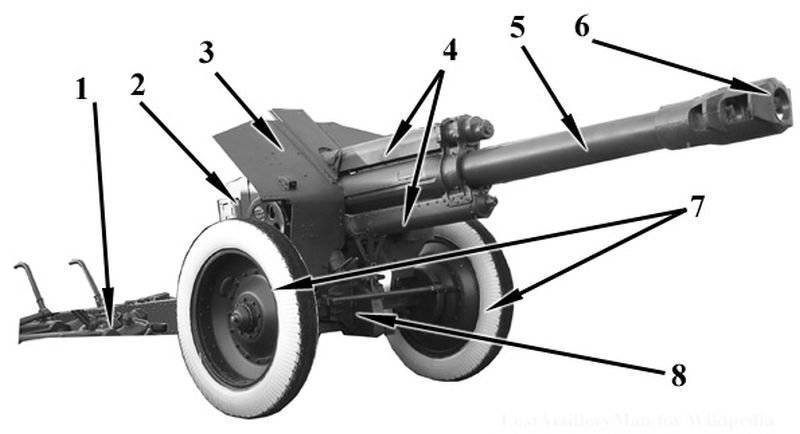
Howitzer device:
- beds of sliding type;
- breech (breech);
- shield armor plate;
- Nakatnik and otkatnik constituting recoil devices;
- howitzer barrel;
- muzzle brake;
- wheel drive;
- suspension suspension;
The howitzer gun carriage consisted of - beds, suspension and wheel travel, the receiver group consisted of a breech, anti-recoil devices, a barrel with a muzzle brake. For quick design and production in howitzers used mechanisms and solutions from other guns:
- gun barrel from howitzer caliber 152 mm model 1938 year;
- improved gun carriage howitzer caliber 122 mm M-30;
- sighting device from howitzer caliber 122 mm M-30;
- bolt from howitzer caliber 152 mm sample 1937, ML-20.
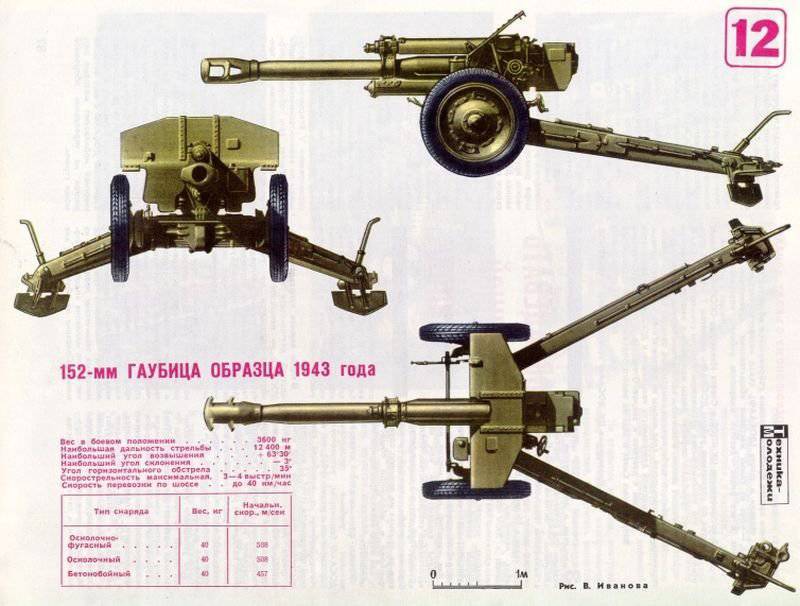
Because of this, the production of guns could be adjusted in just 1.5 a month. In the middle of 1943, the howitzer begins to flow into the reserve units of the Soviet Army. The set of howitzers included ammunition - fragmentation, high-explosive fragmentation, concrete shells. During the war, concrete ammunition was used even against enemy armored vehicles. High-explosive ordnance had a range of 12.4 kilometer, fragmentation action on the front from the place of the fall of 70 meters, into the depth of 30 meters. The high explosive action is a funnel with a diameter of 3,5 and a depth of 1,2 meter.
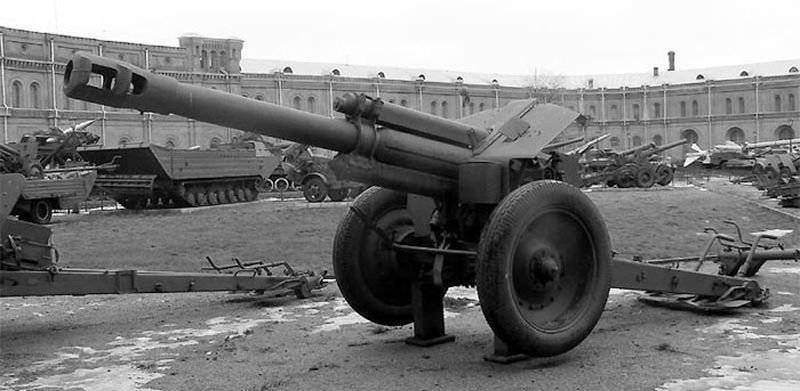
To increase the mobility and transportation of howitzers, they abandon the traditionally performed front end. This made it possible to reduce howitzer weight and transfer time from one position to another to 120 seconds. Improvements of the gun carriage, which affected the cradle and the suspension and wheel drive, led to an increase in speed characteristics to 40 km / h. The combat use of the received howitzers took place mainly at the end of the war - in 1944-45. Actively used howitzers for firing from closed positions on various targets - manpower, fortifications, barriers, tanksimportant objects. Howitzer D-1 has established itself as an accurate and reliable assistant. During the war, there were attempts to improve the gun. Designer F. Petrov made a tank modification of the howitzer, replacing the SU-85 self-propelled gun with a 85 mm caliber gun by 152 mm. They even made a prototype of a new self-propelled gun, called D-15 or SU-D-15. However, the self-propelled gun did not receive further development.
Evaluating the new howitzer, we can confidently say that it, at least, at one time was not inferior to similar world models, and this despite the fact that it was created in the shortest possible time from the details of the tools already in service with the Red Army. For the Soviet Army, this was a necessary howitzer with a good effective range and mobility howitzer gun. After the war, a howitzer was widespread in the Warsaw Pact countries and friendly states. Some of them made their own modernization of the Soviet howitzer. It is a pity that during the Great Patriotic War the howitzer was not produced in a very large series, fewer 500 units were produced per year. The presence of a new howitzer in the units of the Soviet Army had a positive effect on the imminent approach of the great Victory Day.
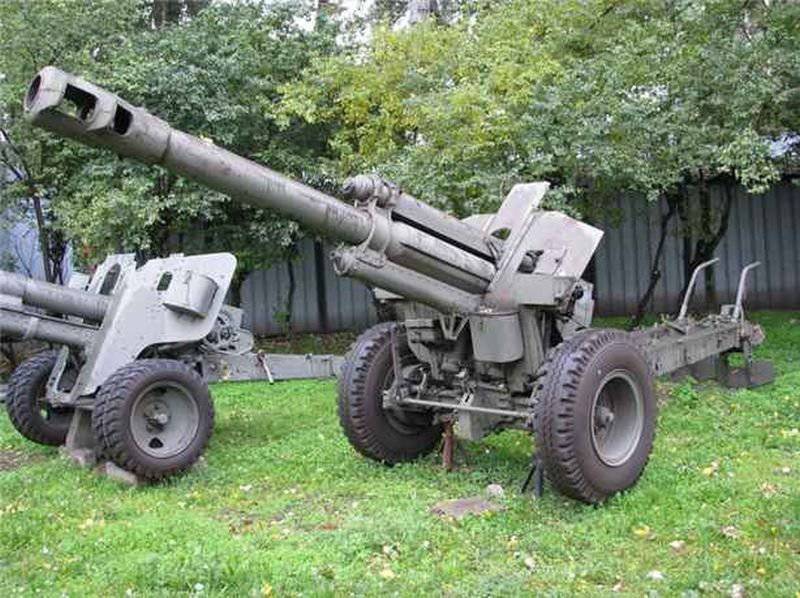
Key Features:
- weight hike / battle - 3.64 / 3.6 tons;
- ground clearance - 37 centimeters;
- barrel calibers / mm - 27.7 / 4207;
- bore calibers / mm - 23.1 / 3527;
- vertical angles - from 63.5 to -3 degrees;
- horizontal angles - 35 degrees;
- line of fire - centimeters 124-127.5;
- gun firing rate - up to 4 rpm;
- firing range - up to 12.4 kilometers;
- OFS mass - 40 kilogram;
- maximum transport speed - up to 40 km / h.
- regular calculation of the instrument - 8 people.
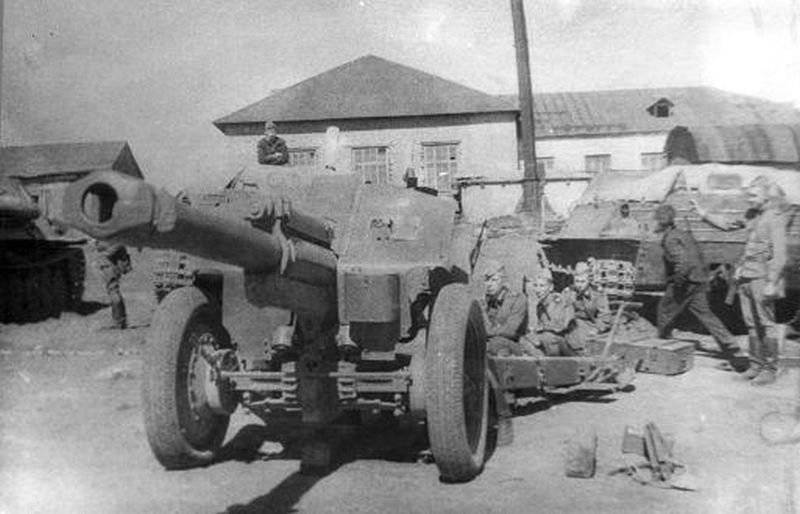
Information sources:
http://forum.worldoftanks.ru/index.php?/topic/241871-%D0%B3%D0%B0%D1%83%D0%B1%D0%B8%D1%86%D0%B0-%D0%BE%D0%B1%D1%80%D0%B0%D0%B7%D1%86%D0%B0-1943-%D0%B3%D0%BE%D0%B4%D0%B0-%D0%B4-1/
http://3v-soft.clan.su/news/gaubica_obrazca_1943_goda_d_1/2010-08-03-141
Information